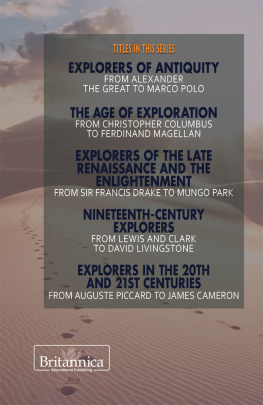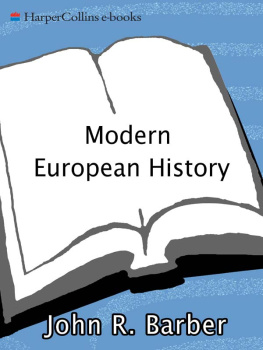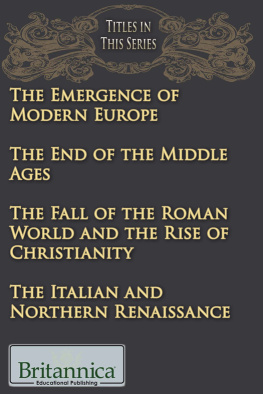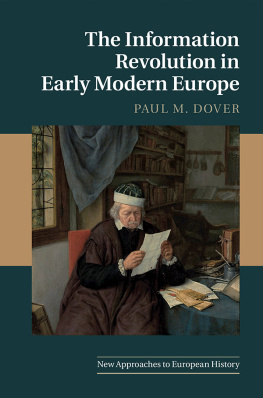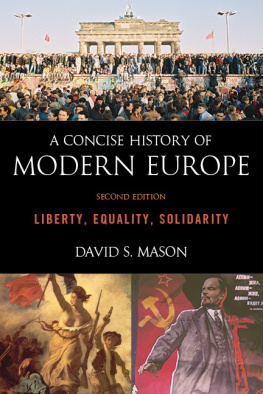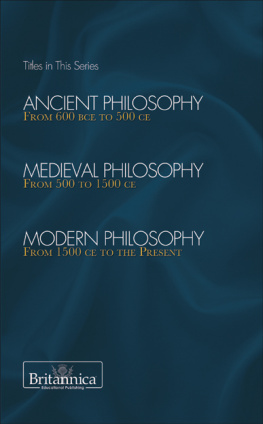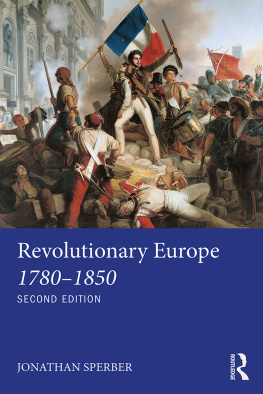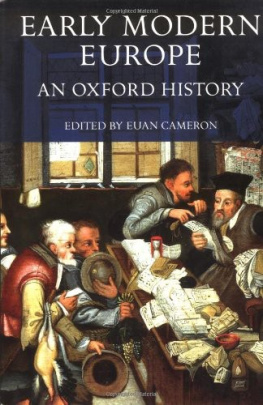A History of Western Civilization
THE EMERGENCE OF
MODERN EUROPE
c. 1500 TO 1788
A History of Western Civilization
THE EMERGENCE OF
MODERN EUROPE
c. 1500 TO 1788
EDITED BY HEATHER M. CAMPBELL, SENIOR EDITOR, GEOGRAPHY AND HISTORY

Published in 2011 by Britannica Educational Publishing (a trademark of Encyclopdia Britannica, Inc.) in association with Rosen Educational Services, LLC 29 East 21st Street, New York, NY 10010.
Copyright 2011 Encyclopdia Britannica, Inc. Britannica, Encyclopdia Britannica, and the Thistle logo are registered trademarks of Encyclopdia Britannica, Inc. All rights reserved.
Rosen Educational Services materials copyright 2011 Rosen Educational Services, LLC. All rights reserved.
Distributed exclusively by Rosen Educational Services.
For a listing of additional Britannica Educational Publishing titles, call toll free (800) 237-9932.
First Edition
Britannica Educational Publishing
Michael I. Levy: Executive Editor
J.E. Luebering: Senior Manager
Marilyn L. Barton: Senior Coordinator, Production Control
Steven Bosco: Director, Editorial Technologies
Lisa S. Braucher: Senior Producer and Data Editor
Yvette Charboneau: Senior Copy Editor
Kathy Nakamura: Manager, Media Acquisition
Heather M. Campbell: Senior Editor, Geography and History
Rosen Educational Services
Alexandra Hanson-Harding: Editor
Nelson S: Art Director
Cindy Reiman: Photography Manager
Matthew Cauli: Designer, Cover Design
Introduction by Charles Doersch
Library of Congress Cataloging-in-Publication Data
The Emergence of Modern Europe : c. 1500 to 1788 / edited by: Heather M. Campbell. 1st ed.
p. cm.(A history of western civilization)
In association with Britannica Educational Publishing, Rosen Educational Services.
Includes bibliographical references and index.
ISBN 978-1-61530-393-9 (eBook)
1. EuropeCivilization16th century. 2. EuropeCivilization17th century. 3 EuropeCivilization18th century. 4. Civilization, Modern. 5. History, Modern. I. Campbell, Heather M.
CB401.E44 2011
940.232dc22
2010014511
On the cover: This painting by Pieter Snayers shows the Battle of Thionville (Diedenhofen) in 1639. It was one of the many fierce battles of the Thirty Years War, which raged across Europe from 1618 to 1648. Imagno/Hulton Archive/Getty Images
On page :Winter Landscape #3, painted by Pieter Bruegel, the Younger (15641638), shows everyday life in the Netherlands. SuperStock/Getty Images
On pages : Maria Theresa at age 35. The archduchess of Austria and queen of Hungary and Bohemia (174080) and empress of the Holy Roman Empire, she was one of the most influential leaders of her time. Imagno/Hulton Archive/Getty Images
CONTENTS

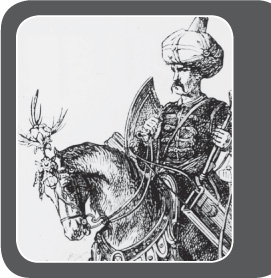
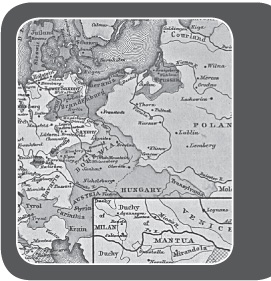

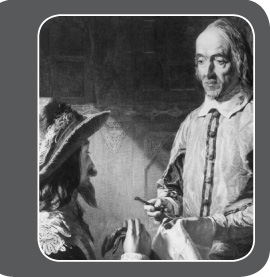
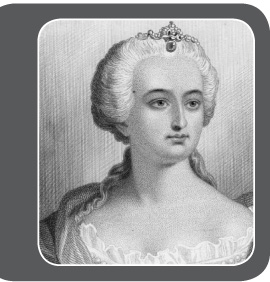
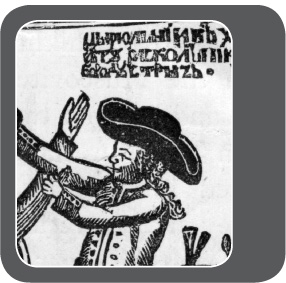
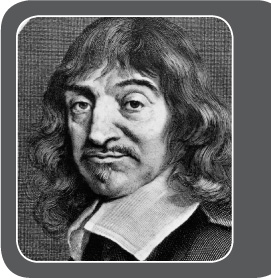
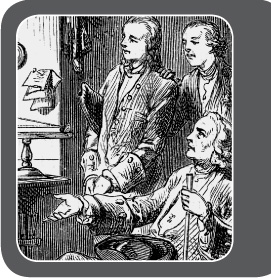
INTRODUCTION

M odern Europethe geographical, political, economic, and cultural entity we recognize todaybegan to take shape between 1500 and 1788. The traditional view of the Renaissance, the European intellectual and cultural revival of the 1400s and 1500s, was that Europe had experienced a rebirth of reason following the thousand years of ignorance known as the Dark Ages. Of course, history is never that simple, and the Middle Ages, the period stretching roughly between the 5th and 15th centuries, was not truly a time of incredible ignorance and cultural backwardness. Still, if we were to travel back in time to the Europe of the Middle Ages, we would find its locally based political and socioeconomic structures largely strange to us. If we jumped ahead to the 1500s, however, we would find the reborn Europe increasingly recognizable in its national political organization, its expanding economies and cities, and its growing understanding of itself. This was the start of early modern Europe.
If the 1500s were an exciting time of prosperity and discovery, they were also a period of disillusionment, when Europe lost forever the unity of its religious belief. If the 1600s saw a thrilling explosion of scientific discovery, philosophic inquiry, and the emergence of modern European values, they also witnessed horrific eruptions of religious wars that killed millions, bankrupted kingdoms, and left towns and farms in smoking ruins. While the 1700s raised up the banner of the Enlightenment, which preached the power of the human mind to liberate and improve peoples lives, that banner fell at the end of the century in a paroxysm of revolution, continent-wide war, and rabid nationalism that tore Europe apart. But as this volume will show, through the clouds of conflict and reaction from 1500 to 1788, the European trend toward greater economies, a greater consideration of the role of the state, greater tolerance, and greater individual freedom became increasingly clear.
Early modern Europes economy and society grew more firmly capitalist during the 1500s. Trade and commerce flourished. New markets opened up, and the Continent found itself part of a world economic system. Capital now not only affected how economies organized themselves but also increasingly influenced politics and international relations.
This was a heady time for many people. After two centuries of decline, recession, plague, famine, and war, things were finally looking up. Overall, Europe in 1500 had only a fraction of the population it had had two centuries earlier. Since more work was available now than there were workers, wages increased. Fewer people meant less demand, so the prices of land, livestock, food, goods, and services fell. Cheap food meant people could afford a better diet. Falling prices also meant this was a good time to invest in new enterprises with better technology. As the population began to increase, towns grew, cities grew, and the middle class grew. With them grew banks, financial institutions, and money marketsand these became more integrated.
This kind of growth was facilitated by the early modern state, which was centralized, with an organized bureaucracy and army, and with its authority vested in a strong executive, usually a monarch. An orderly state could provide fertile ground for business and finance. Indeed, the centralized state was also a consumer, purchasing goods for its own support, as well as weapons for its military; it was also a client of banks, taking out loans and investing.
Next page








